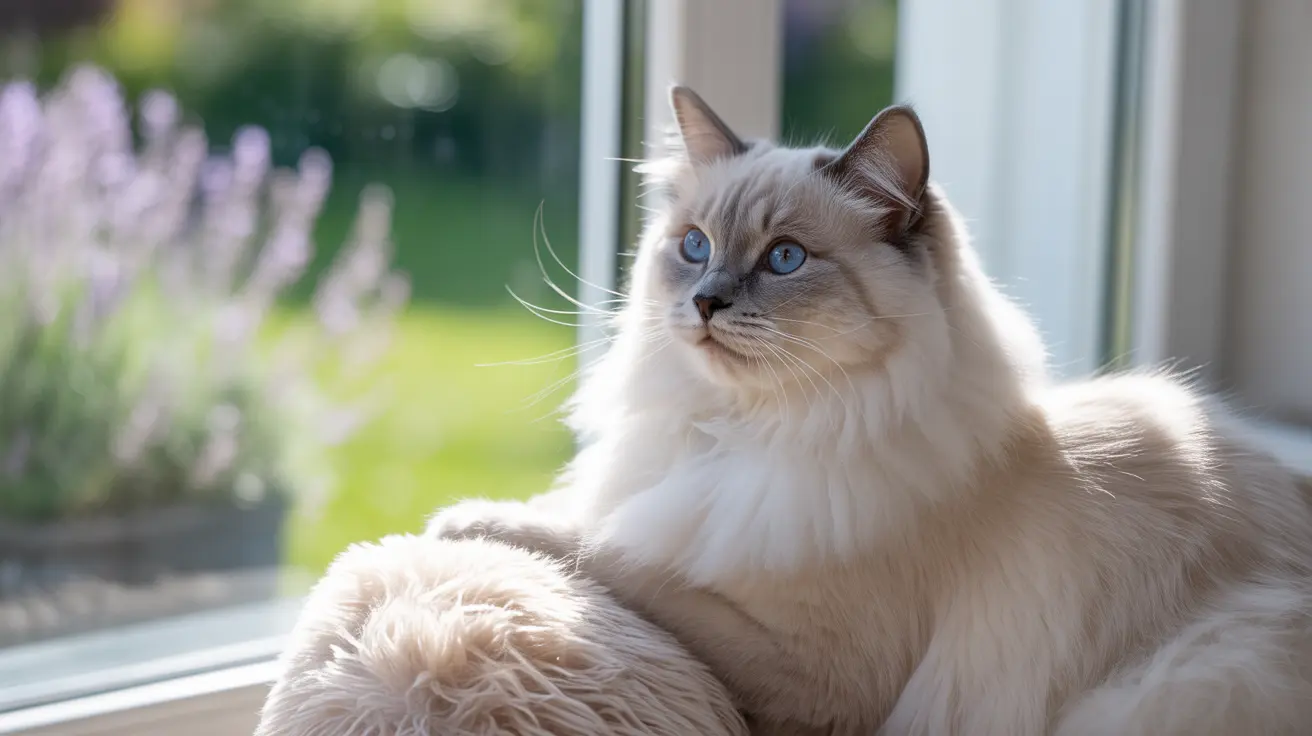Ragdoll cats are renowned for their striking appearance, with their plush coats and signature blue eyes being among their most distinctive features. However, the question of whether all Ragdoll cats have blue eyes isn't as straightforward as it might seem. Let's explore the fascinating genetics and variations behind Ragdoll eye colors.
While traditional pointed Ragdolls are famous for their vivid blue eyes, not every Ragdoll cat displays this captivating trait. Understanding the genetic factors and breed variations that influence eye color can help both potential owners and breed enthusiasts better appreciate these magnificent felines.
The Genetics Behind Ragdoll Blue Eyes
The classic blue eyes in Ragdoll cats are primarily linked to the "cs" Siamese allele, a temperature-sensitive gene that affects melanin production. This gene not only creates the distinctive pointed coat pattern but also results in those mesmerizing blue eyes that many associate with the breed.
Traditional pointed Ragdolls inherit this gene, which ensures their eyes remain a striking shade of blue throughout their lives. The intensity can range from pale ice blue to deep sapphire, depending on the individual cat's genetic makeup.
Different Ragdoll Types and Their Eye Colors
Contrary to popular belief, Ragdolls can actually display several eye colors depending on their specific genetic makeup:
- Traditional Pointed Ragdolls: Always blue eyes
- Mink Ragdolls: Aqua or blue-green eyes
- Sepia Ragdolls: Green or gold eyes
- Solid Ragdolls: May have green, gold, or copper eyes
Breed Standards and Show Requirements
Major cat associations like CFA and TICA maintain strict breed standards regarding Ragdoll eye color. For show-quality traditional pointed Ragdolls, blue eyes are mandatory. Cats with any other eye color are disqualified from competition, though they still make wonderful pets.
The blue eye requirement applies specifically to pointed Ragdolls, while variations like mink and sepia Ragdolls may have different acceptable eye colors within their respective categories.
Health Considerations and Eye Color
While blue eyes are generally healthy in Ragdolls, certain variations require special attention. Blue-eyed white Ragdolls, for instance, should come from responsible breeders who test for potential hearing issues associated with the dominant white gene.
Regular veterinary check-ups are essential for all Ragdolls, regardless of eye color, to maintain optimal eye health and detect any potential issues early.
Frequently Asked Questions
Why do Ragdoll cats have blue eyes and how does their genetics affect this trait?
Ragdoll cats have blue eyes due to the "cs" Siamese allele, a temperature-sensitive gene that affects melanin production. This gene creates both their pointed coat pattern and blue eye color by restricting pigment development.
Can Ragdoll cats have eye colors other than blue, like green or aqua?
Yes, while traditional pointed Ragdolls have blue eyes, Mink Ragdolls can have aqua eyes, and Sepia Ragdolls may have green or gold eyes. These variations result from different genetic combinations.
What distinguishes a true blue-eyed Ragdoll from other cats with blue eyes?
True blue-eyed Ragdolls combine their eye color with specific breed characteristics, including a pointed coat pattern, large size, and distinctive temperament. They also possess the specific genetic markers associated with the breed.
Are blue-eyed white (BEW) Ragdolls albino, and do they have special health considerations?
No, BEW Ragdolls are not albino. They carry the dominant white gene (W) but maintain vivid blue eyes unlike the pale eyes of albino cats. They should be tested for hearing issues, as white cats with blue eyes can sometimes have hearing impairments.
How do breed standards impact the recognition of Ragdolls with different eye colors in cat shows?
Breed standards require traditional pointed Ragdolls to have blue eyes for show purposes. Cats with other eye colors are disqualified from competition, though they can still be registered as pet-quality Ragdolls.
Conclusion
While blue eyes are indeed a hallmark trait of traditional pointed Ragdolls, the breed actually encompasses a wider variety of eye colors through its different variations. Understanding these distinctions helps appreciate the diversity within the Ragdoll breed while maintaining the standards that make these cats so special.






